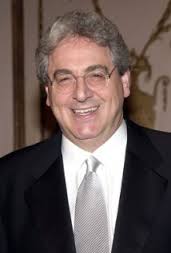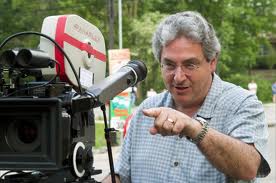Harold Ramis (Harold Allen Ramis)

Harold Ramis
Harold Allen Ramis (November 21, 1944 – February 24, 2014) was an American actor, director, and writer specializing in comedy. His best-known film acting roles are as Egon Spengler in Ghostbusters (1984) and Russell Ziskey in Stripes (1981); he also co-wrote both films. As a writer-director, his films include the comedies Caddyshack (1980), National Lampoon’s Vacation (1983), Groundhog Day (1993) and Analyze This (1999). Ramis was the original head writer of the television series SCTV, on which he also performed, and one of three screenwriters of the film National Lampoon’s Animal House (1978).
Ramis’ films have influenced subsequent generations of comedians and comedy writers. Filmmakers including Jay Roach, Jake Kasdan, Adam Sandler, and Peter and Bobby Farrelly have cited his films as among their favorites. He won the BAFTA Award for Best Original Screenplay for Groundhog Day.
Early life
Ramis was born on November 21, 1944 in Chicago, Illinois, the son of Ruth and Nathan Ramis, who owned the Ace Food & Liquor Mart on the city’s far North Side. While Ramis had a Jewish upbringing, in his adult life he did not practice any religion. He graduated from Stephen K. Hayt Elementary School in June 1958 and Nicholas Senn High School in 1962, both Chicago Public Schools, and in 1966 from Washington University in St. Louis, Missouri, where he was a member of the Alpha Xi chapter of Zeta Beta Tau fraternity.
Afterward, Ramis worked in a mental institution in St. Louis for seven months. He later said of his time working there that it
…prepared me well for when I went out to Hollywood to work with actors. People laugh when I say that, but it was actually very good training. And not just with actors; it was good training for just living in the world. It’s knowing how to deal with people who might be reacting in a way that’s connected to anxiety or grief or fear or rage. As a director, you’re dealing with that constantly with actors. But if I were a businessman, I’d probably be applying those same principles to that line of work.
Career
Early years
Ramis began writing parodic plays in college, saying years later, “In my heart, I felt I was a combination of Groucho and Harpo Marx, of Groucho using his wit as a weapon against the upper classes, and of Harpo’s antic charm and the fact that he was oddly sexy — he grabs women, pulls their skirts off, and gets away with it”. He avoided the Vietnam War military draft by taking methamphetamine to fail his draft physical.
Following his work in St. Louis, Ramis returned to Chicago, where by 1968, he was a substitute teacher at schools serving the inner-city Robert Taylor Homes. He also became associated with the guerrilla television collective TVTV, headed by his college friend Michael Shamberg, and wrote freelance for the Chicago Daily News. “Michael Shamberg right out of college had started freelancing for newspapers and got on as a stringer for a local paper, and I thought, ‘Well, if Michael can do that, I can do that’. I wrote a spec piece and submitted it to the Chicago Daily News, the Arts & Leisure section, and they started giving me assignments entertainment features.” Additionally, Ramis had begun studying and performing with Chicago’s Second City improvisational comedy troupe.
Ramis’ newspaper writing led to his becoming joke editor at Playboy magazine. “I called … just cold and said I had written several pieces freelance and did they have any openings. And they happened to have their entry-level job, party jokes editor, open. He liked my stuff and he gave me a stack of jokes that readers had sent in and asked me to rewrite them. I had been in Second City in the workshops already and Michael Shamberg and I had written comedy shows in college”. Ramis was eventually promoted to associate editor.
National Lampoon and SCTV
After leaving Second City for a time and returning in 1972, having been replaced in the main cast by John Belushi, Ramis worked his way back as Belushi’s deadpan foil. In 1974, Belushi brought Ramis and other Second City performers, including Ramis’s frequent future collaborator Bill Murray, to New York City to work on The National Lampoon Radio Hour.
During this time, Ramis, Belushi, Murray, Joe Flaherty, Christopher Guest, and Gilda Radner starred in the revue The National Lampoon Show, the successor to National Lampoon’s Lemmings. Later, Ramis became a performer on, and head writer of, the late-night sketch-comedy television series SCTV during its first three years (1976–1979). He was soon offered work as a writer at Saturday Night Live but chose to continue with SCTV. Characterizations by Ramis on SCTV include corrupt Dialing for Dollars host/SCTV station manager Maurice “Moe” Green, amiable cop Officer Friendly, exercise guru Swami Bananananda, board chairman Allan “Crazy Legs” Hirschman and home dentist Mort Finkel. His celebrity impressions on SCTV included Kenneth Clark and Leonard Nimoy.
Film career
Ramis left SCTV to pursue a film career and wrote a script with National Lampoon magazine’s Douglas Kenney which would eventually become National Lampoon’s Animal House. They were later joined by a third collaborator, Chris Miller. The 1978 film followed the struggle between a rowdy college fraternity house and the college dean. The film’s humor was raunchy for its time. Animal House “broke all box-office records for comedies” and earned $141 million.
Ramis next co-wrote the comedy Meatballs, starring Bill Murray. The movie was a commercial success and became the first of six film collaborations between Murray and Ramis. His third film and his directorial debut was Caddyshack, which he wrote with Kenney and Brian Doyle-Murray. It starred Chevy Chase, Rodney Dangerfield, Ted Knight, and Bill Murray. Like Ramis’s previous two films, Caddyshack was also a commercial success.
In 1982, Ramis was attached to direct the film adaptation of the Pulitzer Prize-winning book A Confederacy of Dunces by John Kennedy Toole. The film was to star John Belushi and Richard Pryor, but the project was aborted. In 1984, Ramis collaborated with Dan Aykroyd on the screenplay for Ghostbusters, which became one of the biggest comedy hits of the summer, in which he also starred as Dr. Egon Spengler, a role he reprised for the 1989 sequel, Ghostbusters II (which he also co-wrote with Aykroyd). His later film Groundhog Day has been called his “masterpiece”.
He also had a role in the 1997 film As Good As It Gets as Helen Hunt’s character’s son’s doctor.
His films have been noted for attacking “the smugness of institutional life … with an impish good that is unmistakably American”. They are also noted for “Ramis’s signature tongue-in-cheek pep talks”. Sloppiness and improv are also important aspects of his work. Ramis frequently depicts the qualities of “anger, curiosity, laziness, and woolly idealism” in “a hyper-articulate voice”.
In 2004, Ramis turned down the opportunity to direct the Bernie Mac-Ashton Kutcher film Guess Who, then under the working title “The Dinner Party”, because he considered it poorly written. That same year, he began filming the low-budget The Ice Harvest, “his first attempt to make a comic film noir”. Ramis spent six weeks trying to get the film greenlit because he had difficulty reaching an agreement about stars John Cusack’s and Billy Bob Thornton’s salaries. The film received mixed reviews. As of 2004, Ramis’s typical directing fee was $5 million.
In an interview in the documentary American Storytellers, Ramis said he hoped to make a film about Emma Goldman (even pitching Disney with the idea of having Bette Midler star) but that none of the movie studios were interested and that it would have been difficult to raise the funding.
Ramis said in 2009 he planned to make a third Ghostbusters film for release either in mid-2011 or for Christmas 2012.
Personal life
Ramis was married twice and was the father of three children. On July 2, 1967, he married San Francisco artist Anne Plotkin, with whom he had a daughter, Violet. Actor and Ghostbusters co-star Bill Murray is Violet’s godfather. Ramis and Plotkin separated in 1984 and later divorced. In 1989 Ramis married Erica Mann, daughter of director Daniel Mann and actress Mary Kathleen Williams. Together they had two sons, Julian Arthur and Daniel Hayes. Although Ramis maintained non-supernatural Humanist beliefs, Erica’s Buddhist upbringing was to be a huge influence on his philosophies for the rest of his life, and he became friends with the Dalai Lama.
Ramis was a Chicago Cubs fan and attended games every year to conduct the seventh-inning stretch at Wrigley Field. His pastimes included fencing, ritual drumming, acoustic guitar, and making hats from felted fleece; he taught himself skiing by watching skiers on television.
Illness and death
A memorial to Ramis appeared at the “Ghostbusters firehouse.”
In May 2010, Ramis contracted an infection that resulted in complications from autoimmune inflammatory vasculitis and lost the ability to walk. After relearning to walk he suffered a relapse of the disease in late 2011.
He died of complications of the disease on February 24, 2014 at his home on Chicago’s North Shore, at age 69.
Born
- November, 21, 1944
- United States
- Illinois
Died
- February, 24, 2014
- United States
- Illinois







